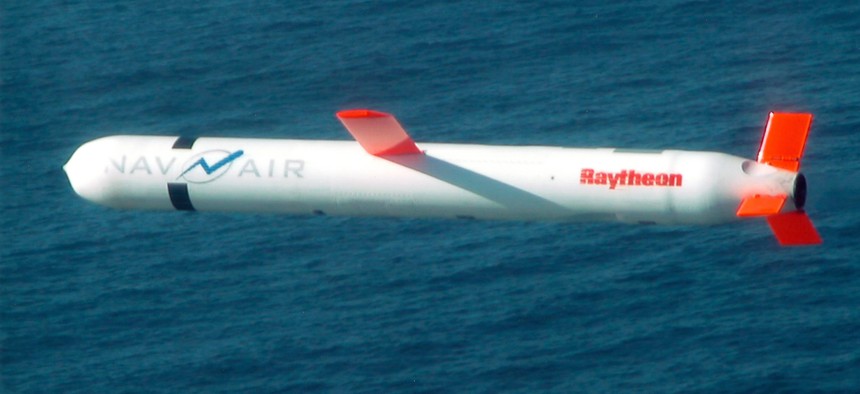sponsor content What's this?

The 3,000th Tomahawk Block IV cruise missile was delivered to the U.S. Navy in October 2013 (Raytheon photo).
Looking Ahead: The Next Generation Tomahawk Missile for the U.S. Navy
Presented by
Raytheon

This past April, U.S. Navy warships launched 59 Tomahawk Block IV cruise missiles toward Shayrat Airfield in Syria as a response to chemical weapons abuses. Those missiles, launched from a safe distance off ships in the Mediterranean Sea, effectively hit targets including Syrian aircrafts, shelters, fueling stations and the country’s missile defense system without putting sailors at risk.
First developed in the 1980s, the Tomahawk missile has been fired in combat more than 2,300 times. Tomahawk cruise missiles are used by U.S. and British forces and, in 2017, Raytheon Company, the manufacturer of Tomahawk missiles, delivered the 4,000th Tomahawk Block IV cruise missile to the U.S. Naval fleet. Since 1991, the Tomahawk missile has been the weapon of choice for the U.S. military given its pinpoint precision and its ability to fly into heavily defended airspace 1,000 miles away – keeping pilots and sailors out of harm’s way.
While the Navy has consistently relied on the Tomahawk missile as a line of defense in the face of global threats, it also needs new defense technologies to protect against risks of the future – and the Tomahawk is evolving to meet that need. In September, the Navy contracted Raytheon to begin integrating a new multi-mode seeker into the current Tomahawk Block IV cruise missile.
This innovative weapon, named the Maritime Strike Tomahawk, will allow the missile to engage moving targets when launched from ships or submarines. Current missiles can only pinpoint fixed targets, such as the airfield in Syria. With a multi-mode seeker radar, the missile will be able to engage active targets at greater ranges than enemies can reach Navy ships, which is imperative to maintaining an advantage over adversaries.
Additionally, this enhancement will help the Navy better utilize the missiles’ other capabilities, which currently include: shifting course instantly on command, circling for hours when needed and beaming a picture of its target to controllers halfway around the world before striking. Under a separate contract, Raytheon will also modernize and upgrade the Tomahawk Block IV cruise missiles by equipping them with new navigation and communication systems starting in 2019.
As the Navy aims to innovate its defense missiles, Raytheon will serve as a trusted partner working side by side to define new requirements, develop new capabilities and stay ahead of emerging threat technologies. Looking to the future, the next generation Tomahawk missile will continue to serve the Navy as the first choice of defense against land and air threats.
To learn more about the new capabilities of the Tomahawk missile and to stay updated on product developments, click here.
NEXT STORY: Uncloaking Adversaries through GIS



